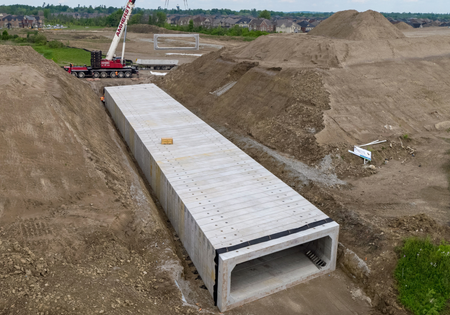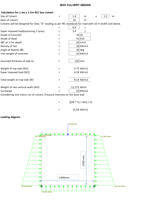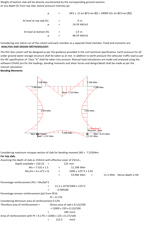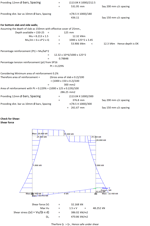BOX CULVERT

Description
<p>Box culvert design involves creating a rectangular-shaped, reinforced concrete structure used for conveying water or other fluids beneath roads, railways, and embankments. The design process ensures that the culvert can handle the required hydraulic flow, support the imposed loads, and maintain structural integrity. Key aspects of box culvert design include:</p>
<ol>
<li>
<p>Site investigation: Assessing the site conditions, including topography, geotechnical information, and hydrological data, is crucial to understand the design requirements.</p>
</li>
<li>
<p>Hydraulic analysis: Evaluating the expected flow rate, water velocity, and headwater and tailwater elevations helps determine the culvert size, shape, and slope needed to accommodate the flow without causing flooding or erosion.</p>
</li>
<li>
<p>Structural analysis: The structural design of the box culvert considers factors such as the dead load (self-weight), live loads (traffic or other imposed loads), earth pressures, and hydrostatic pressures. The analysis ensures that the culvert can withstand these loads without experiencing excessive deflection, cracking, or failure.</p>
</li>
<li>
<p>Material selection: Reinforced concrete is typically used for box culverts due to its strength, durability, and resistance to environmental factors. The concrete mix design and the steel reinforcement must meet specific requirements to ensure the desired performance.</p>
</li>
<li>
<p>Design of components: The culvert's components, such as the top slab, bottom slab, and sidewalls, are designed based on the structural and hydraulic analysis. Engineers determine the required dimensions, thickness, and reinforcement for each component.</p>
</li>
<li>
<p>Joints and connections: Joints and connections between culvert sections should be designed to accommodate movement and prevent water leakage. Various joint types, such as shear keys or gasketed joints, can be used depending on the design requirements.</p>
</li>
<li>
<p>Construction considerations: The design should account for construction techniques, such as precast or cast-in-place methods, and include details for formwork, temporary support, and quality control measures.</p>
</li>
<li>
<p>Inspection and maintenance: Box culverts should be designed to allow for easy inspection and maintenance, ensuring the structure remains in good condition and performs as intended throughout its service life.</p>
</li>
</ol>
<p>The final box culvert design is documented in detailed drawings and specifications, which serve as a guide for construction and obtaining necessary permits and approvals.</p>Calculation Preview
Full download access to any calculation is available to users with a paid or awarded subscription (XLC Pro).
Subscriptions are free to contributors to the site, alternatively they can be purchased.
Click here for information on subscriptions.
Comments: 1
×
johndoyle-admin
2 years ago
A nice debut calculation! I have awarded a three month XLC Pro subscription by way of thanks.




